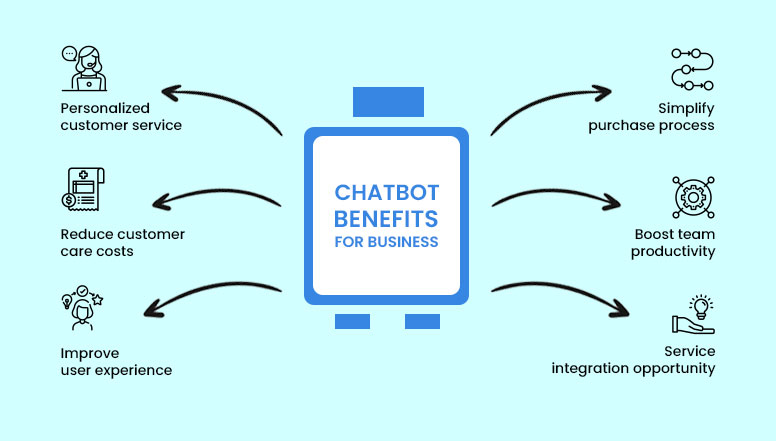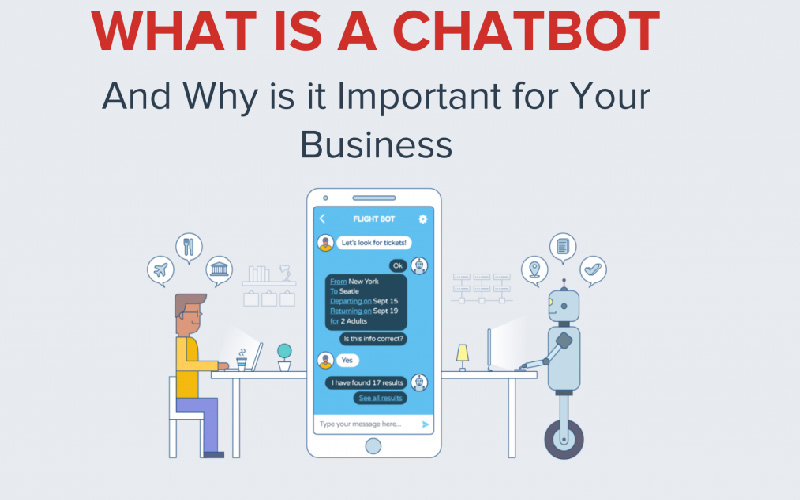What Chatbots are used for?
Welcome to the world of Chatbots – where artificial intelligence meets customer service seamlessly and innovatively. Have you ever wondered how businesses can provide instant responses and personalized interactions around the clock? The answer lies in Chatbots! These virtual assistants are revolutionizing the way companies engage with their customers, streamline operations, and enhance user experiences. In this blog post, we will explore what Chatbots are used for, their benefits, common misconceptions, industries leveraging this technology, and how you can create a successful Chatbot. So sit back, relax, and let’s dive into the fascinating world of Chatbots together!

Types of Chatbots
Chatbots come in various types, each serving different purposes and functionalities. Rule-based chatbots rely on predefined rules and responses to interact with users based on keywords or patterns. They are commonly used for simple customer support queries or FAQs.
Conversational AI chatbots, on the other hand, leverage artificial intelligence and machine learning to understand natural language input and engage in more complex conversations with users. These advanced chatbots can provide personalized recommendations, handle transactions, or even simulate human-like interactions.
Virtual assistants like Siri or Alexa fall under the category of virtual assistant chatbots that help users perform tasks such as setting reminders, checking the weather, or playing music through voice commands. They aim to simplify daily activities through seamless interaction.
Hybrid chatbots combine rule-based systems with AI capabilities to offer a balanced approach between structured responses and intelligent conversations. This type of chatbot is versatile and can adapt to varying user needs effectively.
Benefits of Using Chatbots
Chatbots offer a multitude of benefits across various industries. They provide 24/7 customer support, ensuring that users can get assistance at any time of the day or night. This leads to improved customer satisfaction and retention rates.
Additionally, chatbots can handle multiple inquiries simultaneously, reducing wait times for users. They can also collect valuable data on user interactions, preferences, and pain points to help businesses make informed decisions.
Moreover, chatbots streamline processes by automating repetitive tasks such as answering FAQs and processing orders. This frees up human agents to focus on more complex issues that require personalized attention.
Furthermore, chatbots are cost-effective solutions for businesses looking to scale their customer service operations without significantly increasing overhead costs. By leveraging AI technology, chatbots continuously improve their responses based on user feedback and interactions.
Industries Using Chatbots
From healthcare to e-commerce, chatbots are revolutionizing the way industries interact with customers. In the healthcare sector, chatbots assist patients by providing information on symptoms and directing them to appropriate medical resources. They offer personalized recommendations based on users’ preferences in the retail industry, enhancing customer shopping experiences.
In the banking and finance sector, chatbots streamline processes by answering FAQs, helping users with account inquiries, and even providing financial advice. Real estate companies use chatbots to schedule property viewings and provide details about listings efficiently.
The travel industry benefits from chatbots that can help customers book flights, hotels, or car rentals seamlessly. Additionally, educational institutions utilize chatbots for admissions assistance and student support services.
Various industries are leveraging chatbot technology to enhance customer engagement and streamline operations effectively.
How to Create a Successful Chatbot
When it comes to creating a successful chatbot, there are several key factors to consider. First and foremost, understanding the target audience is crucial. Tailoring the chatbot’s responses and personality to resonate with users is essential for engagement.
Next, focus on designing a seamless user experience. Ensure that the chatbot interface is intuitive and easy to navigate, allowing users to interact effortlessly. Incorporating natural language processing technology can also enhance the conversational flow and make interactions more human-like.
Regularly analyzing data and feedback is vital for improving the chatbot over time. Monitoring conversations, identifying common queries or issues, and refining responses based on user input will help optimize performance.
Don’t forget to test your chatbot thoroughly before deploying it. Conducting beta tests with real users can uncover any potential glitches or areas for improvement before launching it live. By following these steps diligently, you can increase the chances of creating a successful and effective chatbot that adds value to your business or organization.

Common Misconceptions About Chatbots:
One common misconception about chatbots is that they are only capable of providing basic and generic responses. In reality, advancements in AI technology have allowed chatbots to become more sophisticated and personalized in their interactions with users.
Another misconception is that chatbots will completely replace human customer service agents. While chatbots can handle repetitive tasks efficiently, they work best when combined with human support to provide a seamless and enhanced customer experience.
Some people believe that setting up a chatbot requires extensive technical knowledge. However, with the availability of user-friendly platforms and tools, creating a basic chatbot for your business has become more accessible than ever.
It’s also falsely assumed that chatbots lack empathy and understanding. Many modern chatbots are designed to empathize with users’ emotions and provide compassionate responses based on predefined algorithms or machine learning models.
Understanding the capabilities and limitations of chatbot technology is essential for leveraging its benefits effectively in various industries.
Future of Chatbot Technology
As technology continues to advance at a rapid pace, the future of chatbot technology looks promising. Chatbots are evolving beyond basic question-and-answer interactions and becoming more sophisticated in understanding natural language processing.
One exciting development is the integration of artificial intelligence and machine learning algorithms into chatbots, enabling them to learn from user interactions and provide more personalized responses. This will result in a more seamless and human-like conversation experience for users.
Another trend on the horizon is the use of chatbots in virtual reality environments, allowing for even more immersive and interactive experiences. Imagine being able to have a conversation with a chatbot while exploring a virtual world!
Furthermore, as voice recognition technology improves, we can expect to see an increase in voice-activated chatbots that provide hands-free assistance across various devices. The convenience and accessibility of voice-enabled chatbots will revolutionize how we interact with technology on a daily basis.
The future of chatbot technology holds endless possibilities for enhancing customer service, streamlining business operations, and improving overall user experiences across industries.
Conclusion
Chatbots have become an essential tool for businesses in various industries, enhancing customer service, streamlining processes, and improving overall efficiency. As technology continues to advance, chatbots will only become more sophisticated and versatile. By understanding the benefits of chatbots, how they are used in different industries, and how to create a successful chatbot strategy, businesses can leverage this innovative technology to stay ahead of the competition. Embracing chatbot technology now will undoubtedly set businesses up for success in the future as it becomes increasingly integrated into everyday operations. So why wait? Start exploring the possibilities of chatbots today and see how they can transform your business!